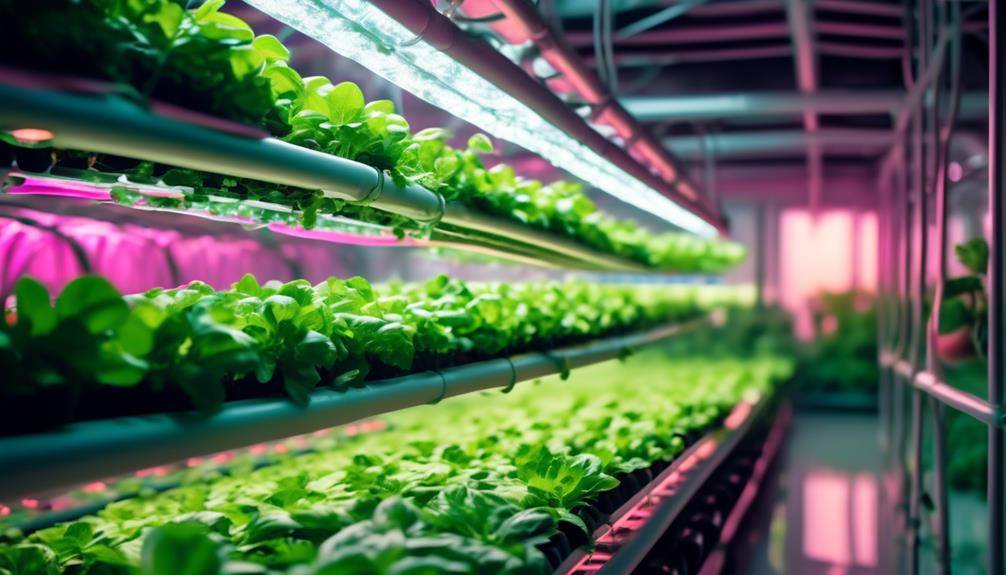How To Organize A Food Waste Reduction Program

Food Waste Reduction Program; Have you ever wondered how you can make a meaningful impact on the environment by reducing food waste? Well, organizing a food waste reduction program might just be the solution you’re looking for. By implementing effective strategies and engaging stakeholders, you can play a vital role in minimizing food waste and creating a more sustainable future. But where do you start? In this discussion, we will explore the step-by-step process of organizing a food waste reduction program, from assessing current practices to monitoring program effectiveness. So, if you’re ready to make a difference and contribute to a greener world, keep reading to discover the key elements of a successful food waste reduction program.
Assess Current Food Waste Practices
To begin assessing your current food waste practices, take a close look at the amount of food being discarded on a regular basis. This step is crucial in identifying the effectiveness of your current system and recognizing any challenges that may be present. By carefully examining the quantity of food waste, you can gain valuable insights into areas where improvements can be made.
Start by conducting a waste audit. This involves collecting and categorizing all the food waste generated in your establishment over a set period of time. This will allow you to determine the volume and types of food being discarded. It is important to involve all staff members in this process to ensure accurate data collection.
Once you have gathered the data, analyze it to assess the effectiveness of your current practices. Look for patterns and trends in the waste, such as specific items being consistently discarded or excessive portions being prepared. This will help you identify areas where adjustments can be made to minimize waste.
Additionally, take note of any challenges that arise during the assessment. Are there any logistical issues that make it difficult to properly manage food waste? Are there any cultural or behavioral factors that contribute to the amount of food being discarded? Identifying these challenges will allow you to develop targeted strategies to overcome them.
Assessing your current food waste practices is an essential first step in organizing a successful food waste reduction program. By evaluating the effectiveness of your current system and identifying challenges, you can lay the foundation for implementing practical and effective solutions to minimize food waste in your establishment.
Set Goals and Objectives
Start by clearly defining your goals and objectives for the food waste reduction program. Having a clear vision will help guide your efforts and ensure that you stay focused on achieving measurable results. Here are some key steps to help you set effective goals and objectives:
- Identify the desired outcomes: Determine what you hope to achieve through your food waste reduction program. This could include reducing food waste by a certain percentage, increasing the amount of food diverted to composting or donation, or improving overall operational efficiency.
- Set specific targets: Once you have identified the desired outcomes, set specific targets that are realistic and achievable. For example, you could aim to reduce food waste by 30% within the first year or increase food donation by 50%.
- Establish a timeline: It’s important to set a timeline for achieving your goals and objectives. This will help you stay on track and measure your progress over time. Break down your targets into smaller milestones and assign deadlines to each one.
Measuring progress and tracking impact are crucial for the success of your food waste reduction program. Regularly evaluate your progress against your set targets and make adjustments as necessary. Use key performance indicators (KPIs) such as the amount of food waste generated, the percentage of food diverted from landfill, or the number of meals donated to track your impact. This data will provide valuable insights and help you identify areas for improvement.
Develop a Food Waste Reduction Plan
Developing a comprehensive plan is essential for effectively reducing food waste in your organization. A well-designed food waste reduction plan will provide a clear roadmap for implementing waste reduction strategies and achieving your goals of food waste prevention. To develop such a plan, you should start by conducting a thorough assessment of your current practices and identifying areas where food waste occurs.
Begin by analyzing your organization’s food purchasing, storage, preparation, and service processes. This assessment will help you understand the root causes of food waste and identify opportunities for improvement. Consider factors such as overordering, improper storage, and inefficient portioning. By pinpointing these areas, you can develop targeted strategies to address them.
Next, set specific and measurable goals for food waste reduction. These goals will guide your plan and help you track progress over time. For example, you could aim to reduce food waste by a certain percentage by implementing portion control measures or by diverting a certain amount of food waste to composting or donation programs.
Once you have identified the areas for improvement and set your goals, it’s time to develop strategies to achieve them. Consider implementing practices such as inventory management systems, standardized recipes, and staff training on proper food handling and portion control. Additionally, explore partnerships with local food banks or composting facilities to divert excess food from going to waste.
Remember to regularly monitor and evaluate the effectiveness of your food waste reduction plan. By tracking your progress and making adjustments as needed, you can ensure that your efforts are successful in reducing food waste in your organization. Developing a comprehensive plan that incorporates food waste prevention and waste reduction strategies will not only benefit the environment but also help your organization save money and contribute to a more sustainable future.
Engage and Educate Stakeholders
To successfully engage and educate stakeholders in a food waste reduction program, you need effective strategies. Consider involving stakeholders in the planning process, such as through focus groups or advisory committees. Provide educational resources and materials that are accessible and tailored to different stakeholder groups. Additionally, develop communication and awareness campaigns to promote the importance of reducing food waste and the role that stakeholders can play in achieving this goal.
Stakeholder Involvement Strategies
Engage and educate stakeholders by hosting interactive workshops to foster their understanding and commitment to food waste reduction efforts. These workshops provide an opportunity to build community partnerships and collaborate on effective strategies. Here are three key approaches to consider:
- Present case studies: Share success stories from other organizations to showcase the tangible benefits of reducing food waste. Highlight the positive impact on both the environment and the bottom line.
- Provide practical tools and resources: Equip stakeholders with practical tips and resources to help them implement change within their own operations. This could include guides on portion control, inventory management, and donation programs.
- Facilitate behavior change: Encourage stakeholders to reflect on their current practices and identify areas for improvement. Use interactive activities to promote dialogue and inspire new ideas for reducing food waste.
Educational Resources and Materials
Consider providing stakeholders with a comprehensive toolkit of educational resources and materials to support their understanding and engagement in food waste reduction efforts. This toolkit could include online courses, workshops, and training materials. Online courses can be a convenient way for stakeholders to learn about the various aspects of food waste reduction, such as proper storage and handling techniques, portion control, and menu planning.
Workshops and training sessions can provide hands-on experiences, allowing stakeholders to practice waste reduction strategies and receive immediate feedback. These educational resources and materials can help stakeholders develop the necessary knowledge and skills to implement effective food waste reduction practices in their organizations. By equipping stakeholders with the tools they need, you can empower them to make a meaningful impact in reducing food waste.
Communication and Awareness Campaigns
Creating effective communication and awareness campaigns is crucial in engaging and educating stakeholders about the importance of food waste reduction. To successfully engage the community and promote awareness, consider the following strategies:
- Implement a comprehensive community outreach plan to reach a wide audience. Utilize various channels, such as social media, local newspapers, and community events, to disseminate information about the program and its goals.
- Seek partnership opportunities with local businesses, schools, and community organizations. Collaborating with these stakeholders can help amplify the message and increase participation in the food waste reduction program.
- Develop educational materials that are informative and visually appealing. Use clear and concise language to convey the message effectively. Include practical tips and strategies that individuals and organizations can implement to reduce food waste in their daily lives.
Implement Strategies and Initiatives
To effectively implement strategies and initiatives for reducing food waste, you need to establish clear goals and develop a comprehensive plan of action. Implementing measures to reduce food waste requires a systematic approach that involves the entire organization, from procurement to disposal. Here are some practical steps to help you successfully implement your food waste reduction program.
First, set specific goals that align with your organization’s values and objectives. Determine the amount of food waste you aim to reduce and set a timeline for achieving these targets. This will provide a clear focus and direction for your initiatives.
Next, develop a comprehensive plan of action. Identify the key areas where food waste is generated, such as during preparation, storage, and serving. Implement strategies to address each stage, such as improving portion control, implementing proper storage practices, and educating staff on waste reduction techniques.
Regularly evaluate the effectiveness of your initiatives. Monitor and track the amount of food waste generated before and after implementing your strategies. Keep records of the types and quantities of food wasted, as well as the reasons behind it. This data will help you identify trends and areas for improvement.
In addition, engage and educate your staff. Provide training on food handling, portion control, and waste reduction techniques. Encourage employee participation and feedback to foster a culture of waste reduction within your organization.
Lastly, communicate your progress and achievements to stakeholders. Share success stories, statistics, and lessons learned to inspire others and create a positive impact in your community.
Monitor and Evaluate Program Effectiveness
Now that you have implemented strategies and initiatives for reducing food waste, it is crucial to monitor and evaluate the effectiveness of your program to ensure its success. Program evaluation allows you to assess the impact of your efforts and make any necessary adjustments to achieve your goals. Here are three key steps to monitor and evaluate the effectiveness of your food waste reduction program:
- Collect and analyze data: Start by gathering relevant data to measure the success of your program. This may include tracking the amount of food waste generated before and after implementing your strategies, as well as monitoring any cost savings or environmental benefits. Use data analysis techniques to identify trends, patterns, and areas for improvement.
- Set clear evaluation criteria: Establish specific metrics and targets to evaluate the success of your program. This could include reducing food waste by a certain percentage, increasing the amount of food donated to local charities, or decreasing disposal costs. Clearly define these criteria to ensure that your evaluation is accurate and meaningful.
- Regularly review and adjust: Continuously review and assess the effectiveness of your program. Monitor the progress of your goals, compare it against your evaluation criteria, and identify any gaps or areas that require improvement. Make adjustments as needed to optimize your program’s impact and ensure its long-term success.
Frequently Asked Questions
What Are Some Common Reasons Why Food Waste Occurs in the First Place?
Common reasons for food waste include overbuying, improper storage, lack of meal planning, and expiration dates. By becoming more mindful of these factors and implementing simple strategies, you can significantly reduce food waste in your household.
How Can I Measure and Track the Amount of Food Waste Generated by My Organization?
To measure and track food waste in your organization, use various measuring methods such as weighing, counting, or estimating. Additionally, consider using tracking software that can help streamline the process and provide valuable data for your waste reduction program.
Are There Any Specific Regulations or Laws That Need to Be Followed When Implementing a Food Waste Reduction Program?
When implementing a food waste reduction program, it is important to be aware of specific regulations and laws that need to be followed to ensure compliance.
How Can I Effectively Communicate the Importance of Food Waste Reduction to My Staff and Other Stakeholders?
You can effectively communicate the importance of food waste reduction to your staff and stakeholders by using engaging strategies such as clear and concise messaging, interactive workshops, and showcasing the positive environmental and financial impact.
What Are Some Potential Challenges or Obstacles That May Arise When Implementing a Food Waste Reduction Program, and How Can They Be Overcome?
When implementing a food waste reduction program, potential challenges may include lack of employee buy-in and resistance to change. Overcome these obstacles by providing training and education, setting clear goals, and regularly communicating the benefits of the program.
Conclusion
In conclusion, organizing a food waste reduction program requires assessing current practices, setting goals, developing a plan, engaging stakeholders, implementing strategies, and monitoring effectiveness. By following these steps, you can create a practical and effective program that will help reduce food waste and promote sustainability in your community. Take action now and make a positive impact on the environment and your local food system.








